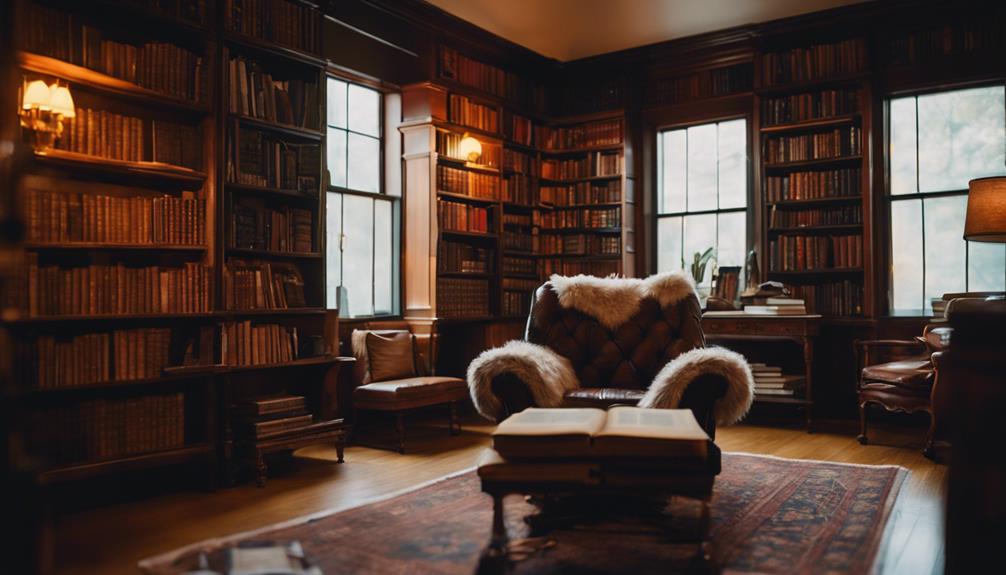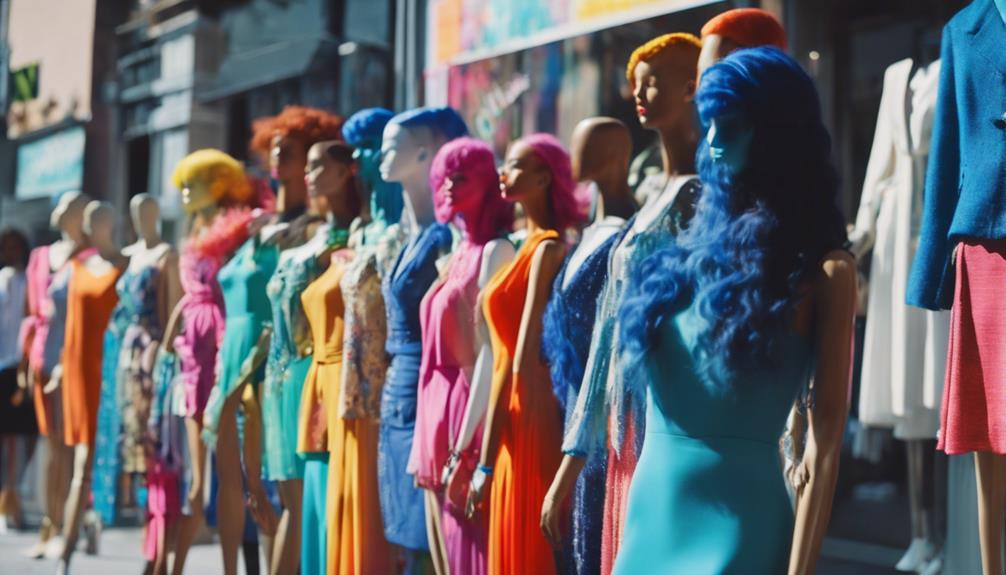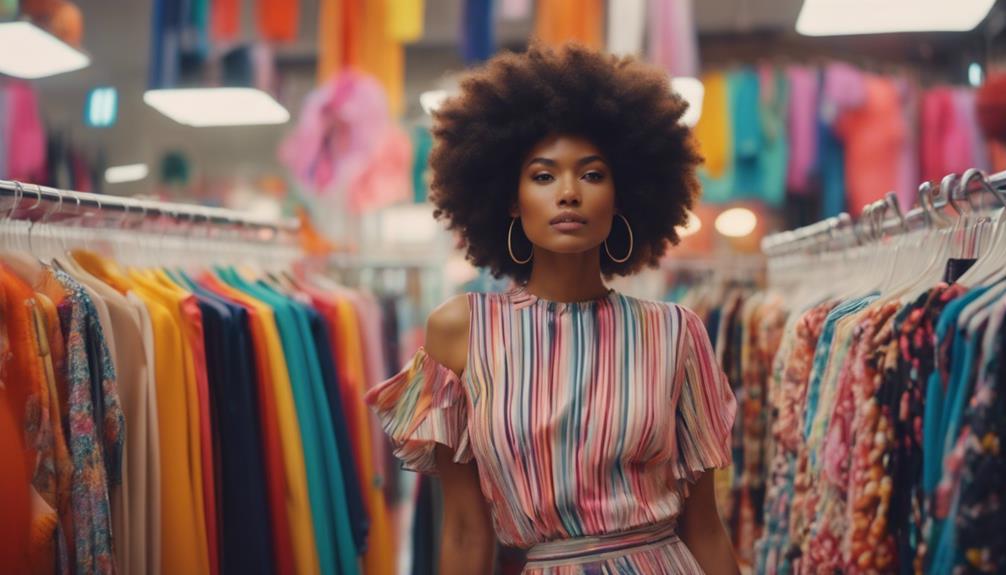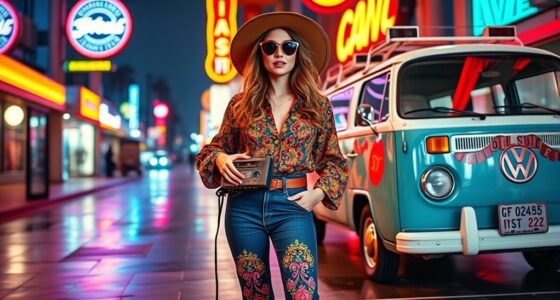At the Fashion Institute of Technology (FIT), you enter a lively center where creativity intersects with cutting-edge innovation. Since its establishment in 1944, FIT has fostered talent and pushed the boundaries of fashion. You will delve into sustainable practices and groundbreaking design techniques, fusing fashion with eco-consciousness. The diverse curriculum emphasizes both style and technology, allowing you to express your individual fashion voice while staying ahead of industry trends. Additionally, the supportive community and unique shopping opportunities around campus keep your inspiration flowing. Stay tuned to learn more about how FIT embodies the future of fashion and innovation!
Key Takeaways
- FIT integrates creativity and technology in its curriculum, nurturing talent and fostering innovation in the fashion industry since 1944.
- The institute emphasizes sustainability, educating students on eco-friendly practices and developing compostable fabrics for a greener future.
- With over 8,000 annual enrollees, FIT's programs blend design, business, and technology, preparing students for diverse roles in fashion.
- FIT promotes gender-neutral apparel and inclusivity, reflecting modern fashion's demand for diverse and versatile clothing options.
Origin and historical background of the fashion trend/style
As you explore the origins of fashion trends, you'll notice how cultural icons and innovators have shaped styles over the years.
The influence of the Fashion Institute of Technology can't be overstated, as it's nurtured talent that has sparked pivotal movements in the industry.
Trends Shaping Fashion's Past
The evolution of fashion has been profoundly influenced by key innovations and cultural shifts, shaping trends that define entire eras.
Since the 19th century, the introduction of the sewing machine in 1851 revolutionized garment production, leading to mass manufacturing and changing how styles emerged. In the mid-20th century, the rise of haute couture, driven by visionaries like Christian Dior and Coco Chanel, elevated fashion to an art form, introducing seasonal collections that still resonate today.
The 1960s brought a cultural shift, with youth-centric styles like the mod look and psychedelic prints mirroring societal changes. Meanwhile, the 1980s introduced power dressing, featuring bold shoulder pads that empowered women entering the workforce.
As you explore trends shaping fashion's past, you'll notice how each era's unique context informs current styles. This experiential learning provides a global perspective, revealing how diverse influences come together to create contemporary fashion.
Streetwear emerged in the late 20th century, merging high fashion with urban culture, exemplified by brands like Supreme and Off-White. This demonstrates how past trends continuously shape future innovations.
Cultural Icons and Innovators
Cultural icons and innovators have always played a pivotal role in shaping fashion trends, blending artistry with social commentary to influence styles across generations.
In New York City, the Fashion Institute of Technology (FIT) stands as an Innovation Center where creativity meets technology. Established in 1944, FIT has evolved to meet the fashion industry's demands, enrolling over 8,000 students annually and offering programs that fuse design, business, and technology.
The institute's commitment to innovation is evident in its alumni, like Stacy Flynn and Keith Kirkland, who've made significant contributions to sustainable practices in product development. Their work not only highlights the role of fashion in addressing environmental issues but also encourages others to think critically about their impact.
FIT promotes a culture of experimental thinking, inspiring students to create groundbreaking projects such as lifesaving textiles and compostable fabrics.
As you explore the history and evolution of fashion, remember that these cultural icons and innovators are essential in pushing boundaries and redefining what style means. Their influence is a reflection of the dynamic relationship between fashion, society, and innovation.
Key Characteristics
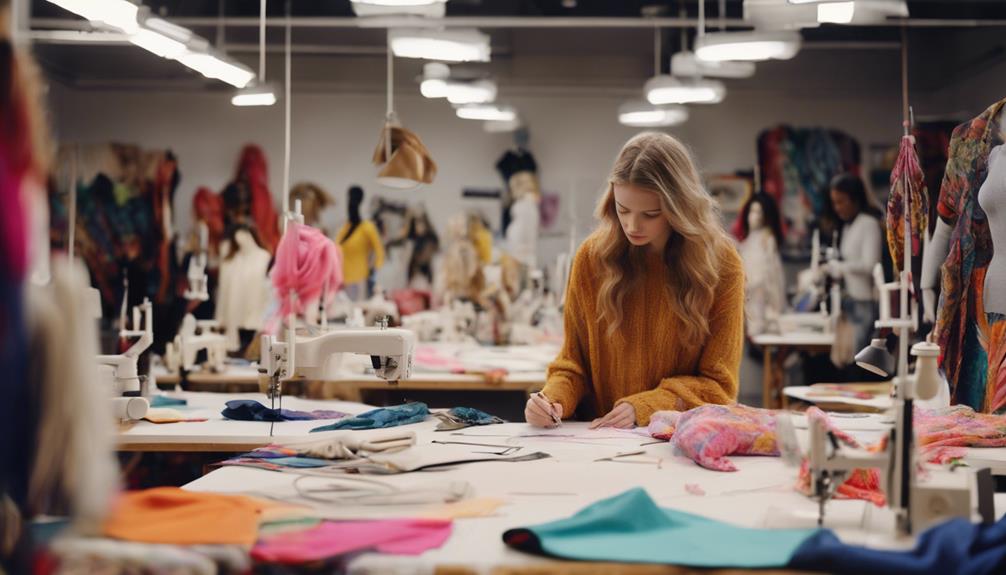
When you think about the key characteristics of fashion, signature silhouettes and patterns immediately come to mind.
You'll also notice the growing trend of sustainable fabrics and hues that reflect a commitment to the environment.
Signature Silhouettes and Patterns
Signature silhouettes at FIT blend traditional elements with modern design, showcasing versatility and inclusivity in fashion. You'll discover how these signature silhouettes cater to diverse body types, guaranteeing that everyone finds something that resonates with their personal style. The curriculum emphasizes innovative patterns that challenge the norms of conventional aesthetics, pushing the boundaries of creative expression.
As you explore FIT, you'll notice a strong focus on gender-neutral apparel, reflecting the growing demand for clothing that transcends traditional gender roles. This inclusivity is woven into the very fabric of the designs, allowing you to express your individuality without limitations. Students are encouraged to experiment with various textiles, which leads to the development of unique signature patterns that stand out in the market.
Moreover, FIT's design thinking principles make certain that you'll learn to reflect on consumer perspectives, making your creations both functional and appealing. You'll grasp how to respond to current trends while also innovating and setting new ones. In this vibrant environment, the fusion of signature silhouettes and innovative patterns prepares you to make a significant impact in the ever-evolving fashion landscape.
Sustainable Fabrics and Hues
At FIT, you'll explore sustainable fabrics and hues that not only enhance your designs but also promote environmentally responsible practices in the fashion industry. You'll immerse yourself in eco-friendly materials integrated into core classes across all majors, which fosters a mindset geared towards sustainability. Recent projects have led to the creation of compostable fabrics and innovative materials that address global sustainability issues, ensuring your designs remain relevant.
Faculty members actively collaborate on research initiatives focused on sustainable practices, supported by National Science Foundation grants. This means you'll benefit from cutting-edge research that can elevate your understanding of sustainable textiles.
You're encouraged to engage in sustainability-focused projects, many of which evolve into startup companies, giving you real-world experience in applying sustainable design as effective business solutions.
As you learn about sustainable fabrics, you'll not only gain knowledge but also develop the skills to see the world differently—understanding the impact of your choices in fashion. At FIT, you're prepared to meet the growing market demand for eco-friendly and ethically produced textiles, setting you on a path to become a leader in the sustainable fashion movement.
Timeless Fashion Staples
What makes timeless fashion staples so essential in any wardrobe is their ability to blend versatility, quality, and enduring style. These pieces, like the little black dress, tailored blazer, and white button-down shirt, serve you well across various occasions. Their high-quality materials and craftsmanship guarantee they last, standing the test of time against fleeting fashion trends.
Often, you'll find a monochromatic color palette in these staples, making them easy to coordinate and layer with other items. Functional design elements, such as pockets in blazers and adjustable hemlines in skirts, add practicality without sacrificing style. This blend of form and function is what sets them apart from more trend-driven pieces.
Investing in timeless fashion staples isn't just smart; it's sustainable. By choosing durable items that you can wear for years, you reduce the need for constant replacements. This aligns perfectly with contemporary values around sustainability.
Let's know how you incorporate these premier public staples into your wardrobe, and you'll discover that they're not just essential; they're transformative. Embrace these classics and elevate your style while making a responsible fashion choice!
Modern Interpretation
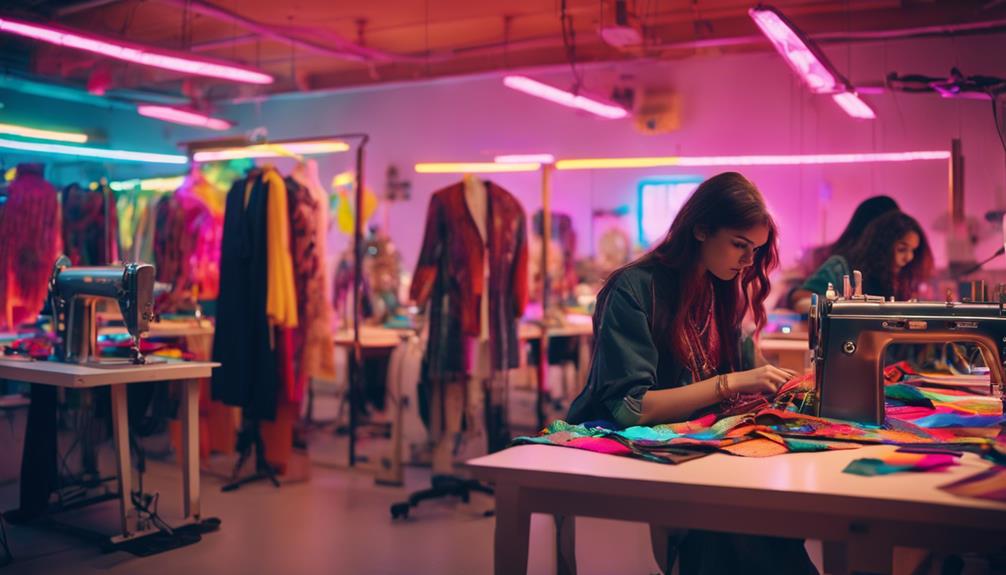
As you explore modern interpretation at FIT, you'll notice a strong focus on sustainable fashion innovations that redefine industry standards.
You'll also see how eco-conscious fashion labels are gaining traction, driven by a new wave of fashion-forward social media influencers.
Together, these elements are reshaping the way you think about style and responsibility in fashion.
Sustainable Fashion Innovations
Sustainable fashion innovations are shaping the future of the industry, encouraging designers to embrace eco-friendly practices that reduce environmental impact. At the Fashion Institute of Technology (FIT), sustainability is woven into the core curriculum, reinforcing the importance of eco-conscious methods in product development, packaging, and marketing across all majors.
As a student, you'll engage in research and projects that tackle global sustainability issues, fostering innovative solutions that can reshape the fashion landscape. FIT's dedicated faculty members are actively involved in developing compostable fabrics and sustainable materials, reflecting a commitment to responsible design practices.
You also have the chance to participate in initiatives like the Clinton Global Initiative University, promoting sustainable practices and raising global awareness.
In addition, FIT's Innovation Center collaborates with industry partners to address pressing sustainability challenges, creating a culture of innovation that prioritizes eco-conscious design solutions.
Eco-conscious Fashion Labels
Eco-conscious fashion labels are revolutionizing the industry by prioritizing sustainable materials and ethical production practices that resonate with today's conscious consumers.
You'll find brands focusing on compostable fabrics and recycled textiles, aiming to minimize environmental impact while promoting responsible consumption. This shift not only addresses sustainability but also aligns with the growing demand for gender-neutral apparel, making fashion more inclusive and versatile.
Many of these modern labels emphasize transparent supply chain practices, ensuring ethical production methods and fair labor conditions for workers. As a consumer, you can feel confident knowing that your choices support a more equitable fashion landscape.
Additionally, innovative technologies are emerging in this space, such as responsive fabrics that interact with their environment, enhancing both sustainability and functionality.
Collaboration between fashion institutions and industry leaders is also paving the way for groundbreaking eco-friendly practices. This exciting synergy is leading to the creation of lifesaving smart textiles and products that address real-world problems.
Fashion-Forward Social Media Influencers
With the rise of eco-conscious fashion labels, social media influencers are now shaping trends and consumer preferences in ways that prioritize both style and sustainability. You might notice influencers leveraging platforms like Instagram and TikTok to showcase their unique styles, greatly impacting what's hot and what's not in the fashion world.
These influencers often collaborate with brands to create sponsored content that feels authentic, driving engagement and sales while connecting with their audiences. You'll also see a growing emphasis on gender-neutral fashion, as influencers challenge traditional clothing norms and promote inclusivity through their styling choices.
Social media serves as a powerful platform for influencers to advocate for sustainable practices in fashion. They bring attention to eco-friendly brands and encourage their followers to make more conscious choices. Plus, when influencers attend fashion weeks and brand launches, they create buzz and provide live coverage that enhances their visibility, linking them to broader fashion communities.
In this ever-evolving landscape, you can trust that fashion-forward influencers are leading the charge toward a more stylish and sustainable future.
Styling Tips
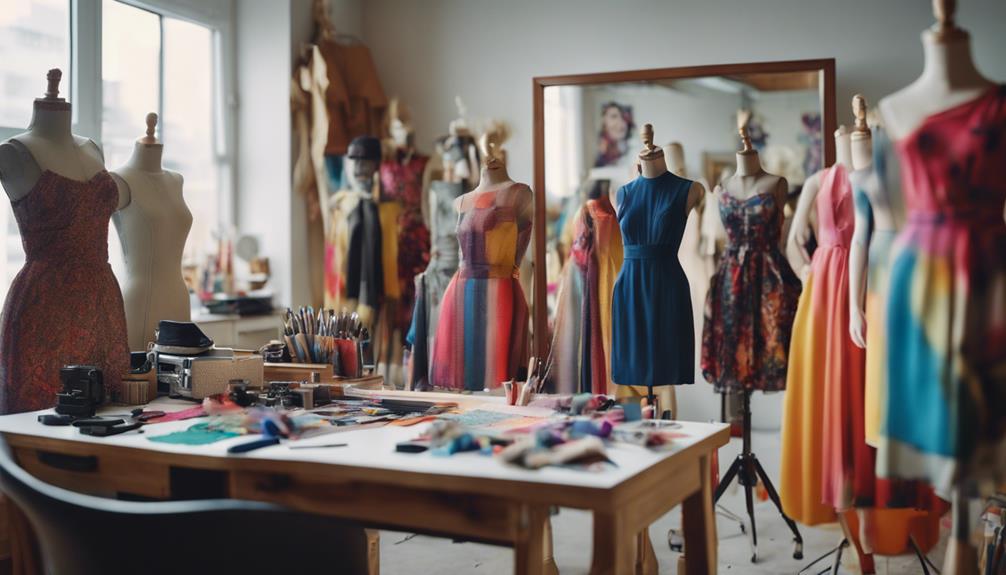
When it comes to styling, mastering the classic white button-up can elevate any outfit.
Layering textures adds versatility and depth, allowing you to shift seamlessly from casual to formal looks.
Plus, understanding color coordination techniques can help you create a harmonious and eye-catching ensemble.
Classic White Button-Up
A classic white button-up shirt is an essential piece that effortlessly shifts from professional settings to casual outings. You can easily dress it up or down, making it a must-have in your wardrobe.
For a polished look suitable for the office, pair it with tailored trousers and heels. Adding a statement necklace can elevate your outfit, giving it a chic flair that's perfect for meetings or business events.
If you're going for a more relaxed vibe, try wearing your white button-up with distressed jeans and sneakers. This combination captures a chic yet effortless aesthetic, ideal for weekend outings or casual hangouts with friends.
Don't forget the layering possibilities! A white button-up can look fabulous under a cozy sweater or a tailored blazer, adding warmth and sophistication during colder months.
Layered Textures for Versatility
Layered textures transform your outfits by adding depth and versatility, making it easy to shift from casual to formal settings. By combining fabrics like denim, knits, and silks, you can create contrast and visual interest that enhances your ensemble. This dynamic approach not only keeps your look engaging but also allows for personal expression.
To achieve a balanced aesthetic, experiment with varying lengths and silhouettes. For instance, pairing a longer cardigan with a fitted top highlights your shape while providing comfort. Don't forget to utilize accessories like scarves or statement jewelry; they can introduce additional textures and colors without overwhelming your outfit. A well-placed scarf can add a pop of color and dimension, making your layered look even more striking.
This trend of mixing textures promotes inclusivity and gender-neutral fashion, giving you the freedom to express your individuality. By layering thoughtfully, you can easily convert your outfits for any occasion, showcasing your unique style.
Color Coordination Techniques
Mastering color coordination can elevate your outfits and help you express your personal style with confidence. Start by understanding the color wheel; it's your best friend. Identify complementary, analogous, and triadic color schemes to enhance any look.
Try using the 60-30-10 rule: allocate 60% of your outfit to a dominant color, 30% to a secondary color, and 10% to an accent color. This approach creates balanced visual interest.
Don't forget to take into account seasonal palettes—warm colors like reds and oranges are perfect for fall, while cool colors such as blues and greens shine in spring and summer. Pay attention to undertones, too; pairing warm shades with warm colors fosters harmony, while mixing cool tones gives a sophisticated vibe.
Lastly, experiment with texture and pattern alongside your color choices. This adds depth and dimension to your outfit. Make sure that the colors you select complement the overall style and message you wish to convey.
With these techniques, you'll confidently create outfits that reflect your unique personality and fashion sense.
Shopping Guide
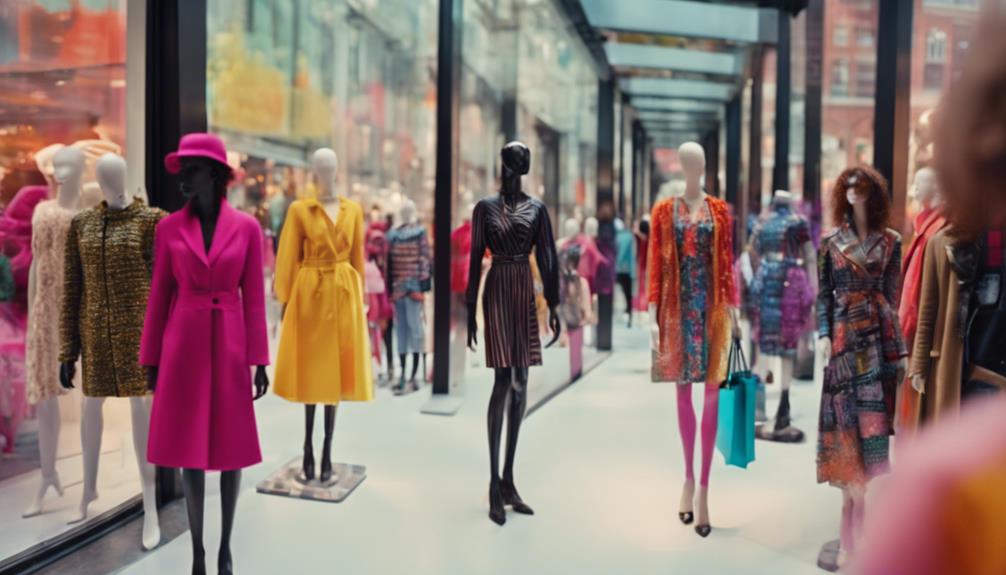
Explore the vibrant shopping scene around the Fashion Institute of Technology, where unique finds and emerging designers await around every corner.
You'll discover the FIT student-run boutique, an excellent spot to snag one-of-a-kind fashion items crafted by your peers. This boutique showcases the creative talents of students, giving you a chance to support emerging designers while elevating your wardrobe.
With the campus nestled in New York City, you'll have access to a diverse array of retail options. Whether you're hunting for high-end fashion boutiques or quirky thrift shops, the choices are endless.
Don't miss FIT's Portfolio Preview Days, where you can shop for inspiration and connect with current students showcasing innovative projects and the latest trends.
Additionally, the emphasis on sustainable practices in education encourages you to explore eco-friendly fashion options. You can shop responsibly while discovering innovative designs that prioritize sustainability.
Upcycled Fashion Projects
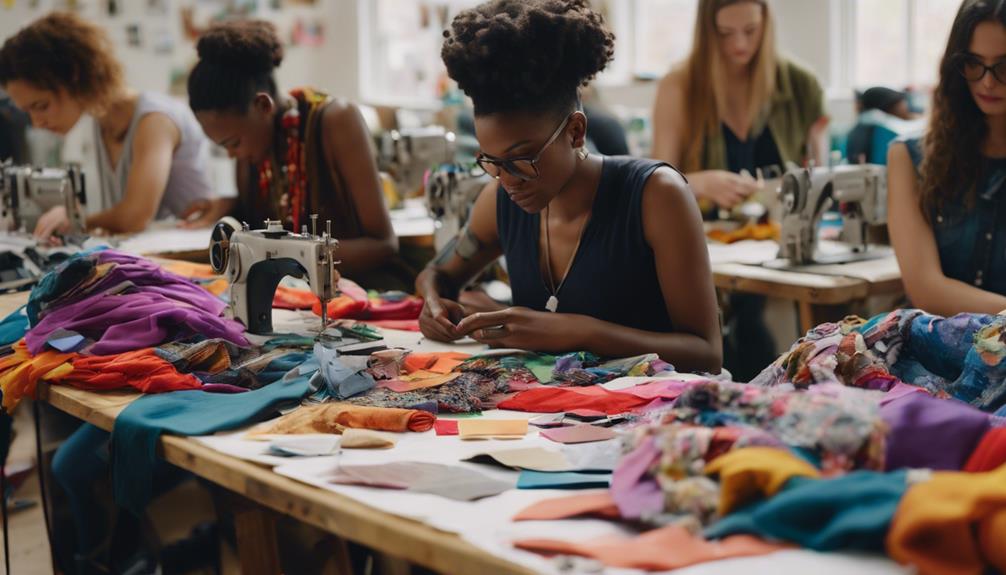
At FIT, you'll explore exciting upcycled fashion projects, like creating unique handbags from recycled denim.
You'll also learn personalized embellishment techniques that let you add your own flair to your designs.
These hands-on experiences not only spark your creativity but also promote sustainable practices in the fashion industry.
Recycled Denim Handbag Creations
Students transform recycled denim into unique handbags, showcasing their creativity while championing sustainability in fashion. Through these upcycled fashion projects at the Fashion Institute of Technology, you'll learn to reduce textile waste—around 92 million tons are generated globally each year. This hands-on experience is essential as it prepares you for a future in sustainable fashion design.
In these projects, you'll apply design thinking and innovative techniques to repurpose denim, contributing to the growing trend of circular fashion. You'll not only create stylish pieces but also guarantee they're functional for everyday use, merging aesthetics with practicality. Each handbag reflects your individual style while promoting environmentally conscious practices.
Personalized Embellishment Techniques
Personalized embellishment techniques elevate upcycled fashion projects by allowing you to creatively transform materials while embracing sustainability. At the Fashion Institute of Technology (FIT), you'll discover how to repurpose materials and reduce textile waste through innovative design. You'll engage in hands-on projects that encourage you to experiment with various embellishment methods, such as embroidery, patchwork, and fabric manipulation.
These techniques not only enhance the aesthetic appeal of your upcycled garments but also instill a deeper understanding of individuality and innovation in fashion design. By integrating sustainable practices into your projects, you'll align with FIT's commitment to addressing global sustainability issues. This approach fosters a creative community of experimental thinkers, where collaboration and exploration lead to fresh ideas.
As you immerse yourself in personalized embellishment, you'll learn to appreciate the unique story each piece tells, transforming discarded items into wearable art. This educational journey empowers you to redefine the fashion landscape while making a positive impact on the environment.
Cultural Impact
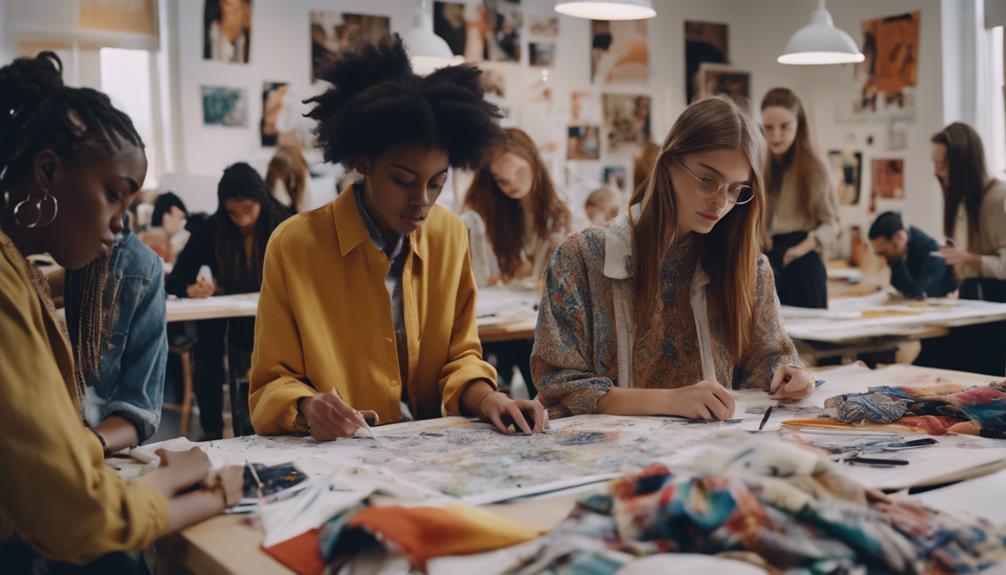
When you think about fashion's role in film and television, you can see how it shapes cultural narratives and influences public perception.
Fashion activism also plays an essential part in raising awareness about social issues, encouraging you to think critically about the messages behind what you wear.
At FIT, you'll explore these intersections, gaining insights into how fashion reflects and drives cultural change.
Fashion in Film and Television
Fashion in film and television plays a pivotal role in shaping cultural trends, with iconic costumes often influencing how audiences perceive characters and narratives. You might remember the striking outfits worn by characters that have become symbols of their stories, showcasing the power of visual storytelling.
Designers like Edith Head collaborated with directors such as Alfred Hitchcock, creating unforgettable looks that resonate with viewers long after the credits roll.
The impact of fashion in media extends beyond aesthetics; it actively affects consumer behavior. When you see a character wearing a particular style or brand, it can spark interest, driving audiences to seek out similar designs.
Over the decades, fashion in film has evolved, mirroring societal changes—like the increasing visibility of gender-neutral clothing in contemporary films and series.
Recognition of this artistry is celebrated at events like the Costume Designers Guild Awards, which honor the crucial role costume design plays in storytelling.
Fashion Activism and Awareness
At the Fashion Institute of Technology, students actively engage in fashion activism, using their designs to address social issues and promote cultural awareness. The curriculum emphasizes the significance of design in fostering positive change, encouraging you to explore the societal implications of your creations.
You'll learn to integrate sustainability principles into your work, ensuring that your fashion choices consider environmental and ethical factors. FIT collaborates with various organizations focused on inclusivity and diversity, creating a supportive community for marginalized voices in the industry.
This environment inspires you to tackle pressing societal topics through innovative designs that challenge conventional fashion norms. By doing so, you not only express your creativity but also advocate for social justice.
As you progress through your studies, you'll see how alumni of FIT make their mark in fashion activism, using their platforms to raise awareness about crucial issues like gender equality and environmental sustainability. Their journeys serve as a reminder of the cultural impact you can achieve through your work.
At FIT, you're not just learning about fashion; you're becoming a catalyst for change in an industry that needs it.
Frequently Asked Questions
Is It Worth Going to Fashion Institute of Technology?
If you're passionate about fashion and design, attending the Fashion Institute of Technology could be worth it. You'll gain hands-on experience, valuable industry connections, and a strong foundation to launch your career in the creative economy.
What Is Special About Fashion Institute of Technology?
FIT stands out for its strong industry connections, innovative programs, and commitment to sustainability. You'll find a vibrant community that fosters creativity, real-world experience, and collaboration, making it a unique place for aspiring fashion professionals.
Is It Hard to Get Into Fit?
Getting into FIT can be challenging due to its 50% acceptance rate. To improve your chances, focus on maintaining strong academics, submitting a compelling portfolio, and highlighting relevant extracurricular activities or work experience in your application.
What Is the Acceptance Rate for Fashion Institute of Technology Fashion Design?
The acceptance rate for the Fashion Institute of Technology's Fashion Design program is around 48%. You'll need a strong portfolio and solid academic performance to increase your chances of getting in, so prepare accordingly.
What Innovative Fashion Styles Can I Find at the Fashion Show Mall?
Discover the ultimate shopping destination for innovative fashion styles at the Fashion Show Mall. From high-end designer boutiques to trendy and unique fashion retailers, you’ll find a diverse array of styles to elevate your wardrobe. Whether you’re seeking the latest runway trends or timeless classics, this mall has it all.
Conclusion
At the Fashion Institute of Technology, you're not just learning about trends; you're diving into a rich history of style and innovation.
By embracing the key characteristics of modern fashion and exploring upcycled projects, you'll discover how to express your unique identity.
Remember, fashion is more than just clothes—it's a cultural statement.
So, get inspired, experiment with your style, and make a statement that's truly your own.
Your fashion journey starts here!

